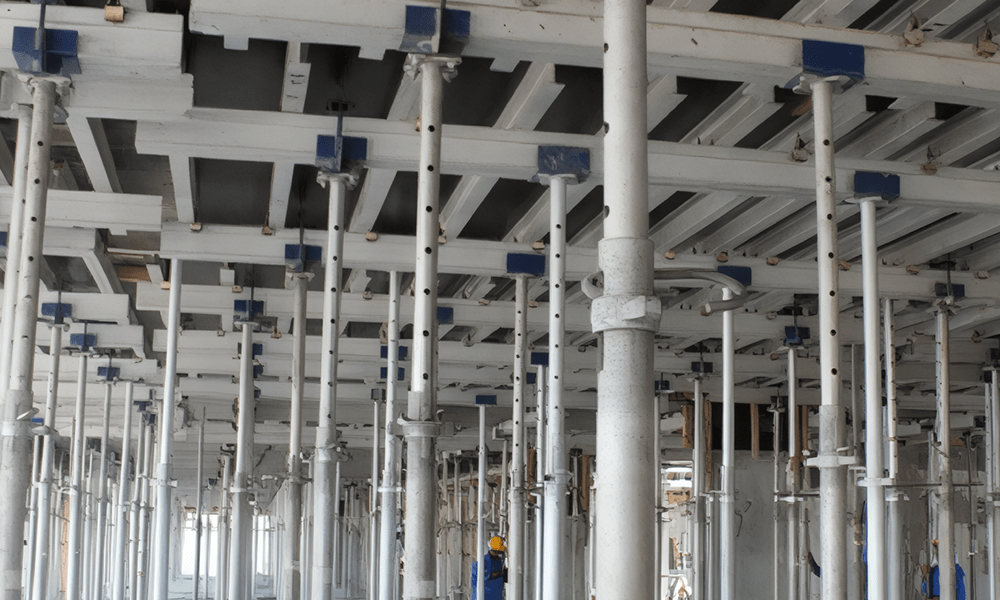If you’re looking to deepen your understanding of building support systems, you might have come across the terms “falsework” and “formwork.” Although they’re often used together in construction, they serve different purposes and play distinct roles in creating safe, durable structures. Knowing the difference between falsework and formwork can be invaluable in having a clear understanding of how each contributes to the construction process. To help you with that, we will break down what falsework is, how it functions, and how it differs from formwork. By the end, you’ll have a solid grasp of both terms and understand why each one is essential in the construction world.
What is Falsework?
Falsework refers to temporary structures built to support a permanent structure during its construction. This includes scaffolding, props, and other support systems that hold up components like arches, beams, or bridges until they can stand on their own. Falsework essentially acts as a “skeleton” for the structure, providing temporary stability as the construction process progresses.
Key Characteristics of Falsework:
- Temporary Support: Falsework is removed once the permanent structure is stable enough.
- Supports Heavy Loads: Falsework can handle significant weight, supporting structures like bridges and large beams.
- Essential for Complex Shapes: Falsework is commonly used in projects that involve arches or other complex shapes that require support until fully set.
What is Formwork?
While falsework supports the structure, formwork shapes it. Formwork refers to the molds or frames into which concrete is poured to form walls, columns, slabs, or beams. It creates the desired shape and holds the concrete in place until it sets.
Key Characteristics of Formwork:
- Shape Provider: Formwork shapes the concrete, giving it structure and form.
- Used for Multiple Elements: Formwork is essential for forming walls, columns, beams, and other concrete elements.
- Can Be Temporary or Permanent: While most formwork is temporary, some systems, like stay-in-place formwork, remain part of the structure.
To learn more about formwork check out our blog on Different Types of Formwork and Their Applications in Construction, for a more in-depth understanding of formwork.
Understanding the Difference Between Falsework and Formwork
Now that we’ve defined each term, let’s dive into the difference between falsework and formwork. Though they’re closely related, each serves a unique purpose in construction, and understanding their distinctions is critical.
| Aspect | Falsework | Formwork |
| Primary Purpose | Provides temporary support to hold up the structure. | Molds the concrete into the desired shape. |
| When It’s Used | Used until the structure can bear its own weight. | Used until the concrete sets and hardens. |
| Main Components | Includes scaffolding, props, beams, and trusses. | Includes molds made from timber, steel, or plastic. |
| Removal | Removed once the structure is stable. | Removed once the concrete has set. |
| Typical Applications | Arches, bridges, beams, and other load-bearing parts. | Walls, columns, slabs, and beams. |
The fundamental difference between falsework and formwork is that falsework is about supporting weight, while formwork is about shaping concrete. These two systems work together but serve distinct functions in the construction process. Learn more here.
When Do You Need Falsework?
It is crucial in construction projects involving structures that need temporary support to stay upright during the building process. Here are some common situations where falsework is essential:
- Building Arches and Bridges
When constructing arches or bridges, the structure requires support until the components lock together to form a self-supporting system. It holds up the elements until this point, preventing collapse during construction. - High-Rise Buildings and Beams
Large beams and components in high-rise buildings often require temporary support. It props up these elements until the concrete or steel gains the strength to bear the load. - Complex Architectural Designs
For projects involving unique or complex shapes, it offers the stability needed to execute intricate designs without risking structural integrity.
Choosing the Right Materials for Falsework
Falsework requires materials that are strong, durable, and easy to work with. However, selecting the right materials depends on the project’s scope, budget, and structural demands. Here’s a breakdown of common materials for each:
Different Types of Materials:
- Steel: Known for its strength and durability, steel is often used in large projects requiring heavy load-bearing capacity.
- Timber: Timber is a versatile option for smaller projects but may not withstand heavy loads.
- Aluminium: Lightweight and strong, aluminium is useful in high-rise projects where weight matters.
Common Challenges with Setting up Falsework
Although it can be essential in construction, it comes with challenges. Understanding these issues can help prevent delays and ensure a smoother construction process.
- Setting Up Falsework on Uneven Ground: Falsework must be stable, and uneven ground can compromise its stability. In these cases, adjustable supports or extra bracing may be needed.
- Removing Falsework or Formwork Too Soon: Removing support structures too early can lead to structural failure. Always ensure the concrete has reached the required strength before disassembly.
Need Help Choosing the Right Falsework or Formwork?
At Scaffco, we understand the importance of choosing the right support systems for your construction project. If you need durable falseworks for your construction projects, our team is here to support your project from start to finish. Contact us today to discuss how we can provide high-quality, customized solutions that meet your needs.



 P.O. BOX 18234 Jebel Ali Dubai – UAE
P.O. BOX 18234 Jebel Ali Dubai – UAE